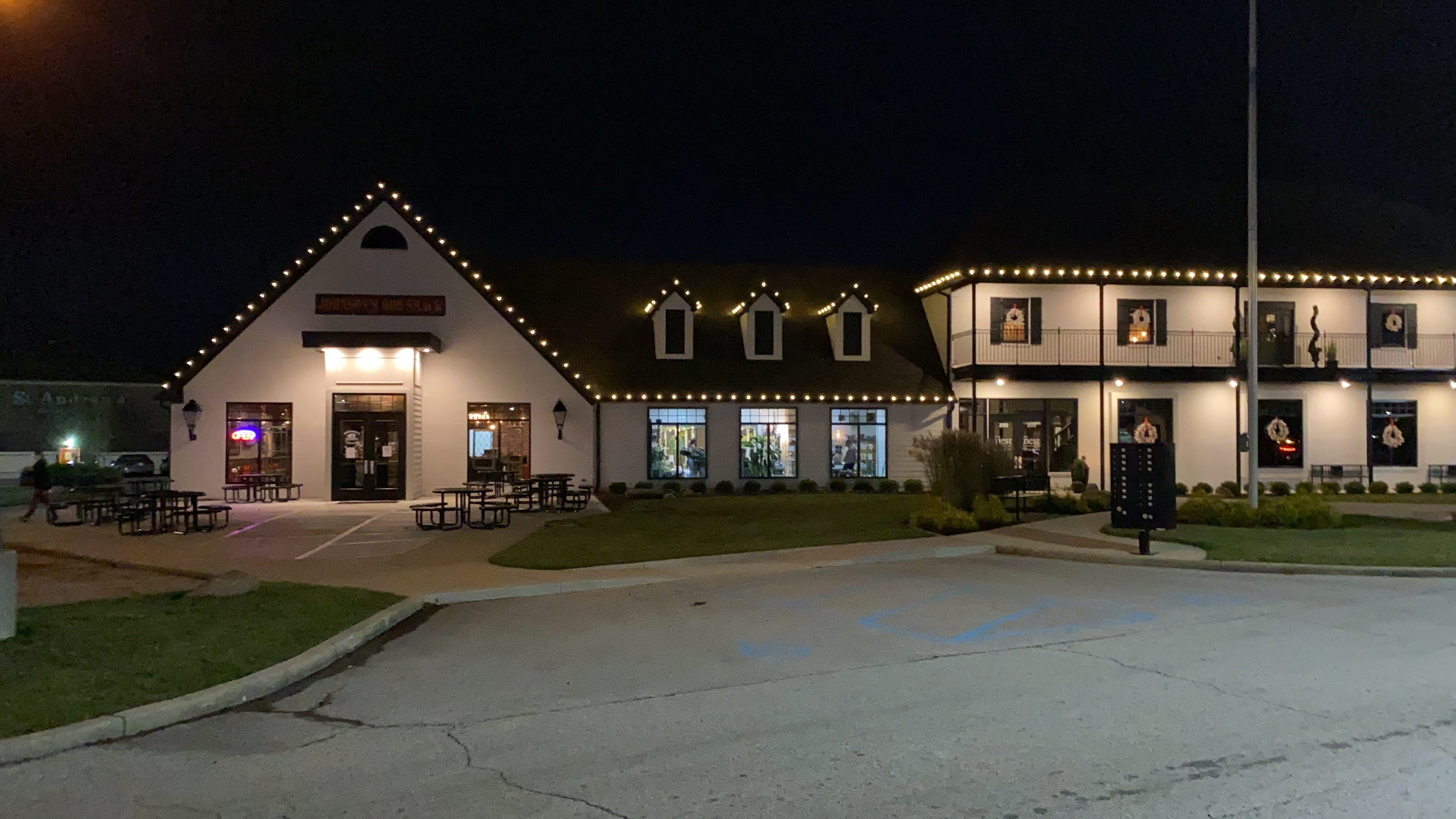Blog
Our Top Blog Posts

Why 90% of Christmas Lights Businesses Fail (And How to Be the 10%)
Running a successful Christmas lights installation business requires more than just technical skills and quality equipment. Many contractors enter this industry with high hopes but struggle to sustain long-term growth. Understanding the fundamental principles that separate thriving businesses from those that fail can make the difference between seasonal work and a profitable year-round enterprise.
Understanding Why Christmas Lights Businesses Fail
The Christmas lighting industry sees many new entrants each year, but only a fraction develop into sustainable businesses. Most failures stem from treating the venture as a hobby rather than a legitimate business operation. Without proper systems, financial management, and strategic thinking, even technically skilled installers find themselves struggling to maintain consistent profitability.
Successful businesses understand that longevity comes from working on the business, not just in it. This means developing systems for customer acquisition, project management, and financial planning rather than simply focusing on the next installation job.
The Critical Importance of Knowing Your Numbers
One of the most significant factors distinguishing successful Christmas lights businesses from struggling ones is financial awareness. Many contractors operate on a simple "money in, money out" model, hoping something remains at the end of each month. This approach inevitably leads to cash flow problems and business failure.
Professional Christmas lights installers must track key performance indicators including:
Customer acquisition costs across different marketing channels
Average project values by service type and geographic area
Profit margins on various service offerings
Return on investment for marketing expenditures
Seasonal cash flow patterns
Understanding these metrics enables informed decision-making about where to invest time and resources. For example, if yard sign marketing generates a 20-to-1 return on investment while direct mail produces only 3-to-1, the smart choice becomes obvious.
Strategic Pricing for Business Growth
Pricing represents one of the most powerful levers for business improvement. Many Christmas lights installers undercharge for their services, believing low prices guarantee more customers. This strategy typically backfires, attracting price-sensitive clients who provide lower margins and more complaints.
Professional installers should develop tiered pricing structures that cater to different customer segments. Every estimate should include multiple options:
Premium package ($4,000+) featuring comprehensive lighting design and premium materials
Standard package ($2,000-$3,000) covering typical residential installations
Basic package ($1,000-$1,500) for simple lighting needs
This approach serves two purposes: it increases average transaction values and helps installers understand their market positioning. If closing rates exceed 80%, prices are likely too low. The goal is finding the sweet spot where profitable work is consistently secured without racing to the bottom on pricing.

Moving Beyond Equipment Obsession
Many Christmas lights installers fall into the equipment trap, believing that superior tools and materials automatically generate more business. While quality equipment matters, it cannot substitute for effective marketing and customer relationship management.
Customers hire Christmas lights installers to solve problems and create magical holiday experiences, not because of specific equipment brands. Focus should remain on understanding customer pain points and delivering exceptional service rather than showcasing technical specifications.
The most successful installers often start with basic equipment and upgrade only when business volume justifies the investment. A systematic approach to business growth trumps expensive equipment every time.
Building Effective Marketing Systems
Sustainable Christmas lights businesses require consistent customer acquisition systems that operate independently of referrals and word-of-mouth marketing. While these organic sources provide valuable business, relying solely on them creates vulnerability during slower periods.
Yard Sign Marketing
Yard signs remain one of the most cost-effective marketing methods for Christmas lights installers. The key lies in strategic placement and volume. Successful installers place signs Friday or Saturday mornings in high-traffic areas, accepting that some will be removed while others generate leads.
Test different designs and messages to optimize performance. Track which locations and sign variations produce the best results, then scale successful approaches.
Digital Marketing Foundation
Every professional Christmas lights installer needs a strong online presence including:
Optimized Google My Business profile with regular updates and customer photos
Professional website showcasing premium installations
Consistent review generation and response system
Local search optimization targeting specific service areas
Digital marketing efforts should focus on attracting ideal customers rather than simply generating volume. High-quality project photos and professional presentation attract better clients who value quality over low prices.

Customer Segmentation and Targeting
Not all customers provide equal value to Christmas lights businesses. Successful installers identify their most profitable customer segments and focus marketing efforts accordingly.
Analyze past projects to identify patterns among top-paying customers:
Geographic concentrations of high-value projects
Property types that generate larger contracts
Customer demographics that appreciate premium services
Use this information to target marketing efforts more effectively. Direct mail campaigns, digital advertising, and networking activities should prioritize areas and audiences most likely to purchase premium services.
Developing Systematic Business Operations
Growing beyond a one-person operation requires systematic approaches to every aspect of the business. This includes standardized processes for:
Project Management
Initial customer consultation and needs assessment
Detailed project planning and material estimation
Installation scheduling and crew coordination
Quality control and customer satisfaction verification
Customer Communication
Response time standards for inquiries and quotes
Project update protocols during installation
Post-installation follow-up and maintenance scheduling
Review request and referral generation systems
Financial Management
Cash flow forecasting for seasonal variations
Equipment purchase and replacement planning
Tax preparation and estimated payment scheduling
Profit margin tracking by project type
Leadership and Team Development
As Christmas lights businesses grow, leadership skills become increasingly important. Many technical experts struggle with the transition to managing employees and developing teams.
Successful leaders understand that employee mistakes often reflect training deficiencies rather than individual failures. Investing time in proper training, clear communication of expectations, and ongoing feedback creates more reliable teams and better customer experiences.
Understanding individual employee motivations and communication styles improves team performance. Some team members respond to recognition and praise, while others prefer monetary incentives or additional responsibilities.

Cash Flow Management for Seasonal Businesses
Christmas lights installation presents unique cash flow challenges due to its seasonal nature. Professional installers must plan for extended periods with limited income while maintaining overhead costs and preparing for the next season.
Strategies for managing seasonal cash flow include:
Diversifying into related services like permanent lighting installations
Offering maintenance and storage services during off-seasons
Developing commercial contracts that provide year-round revenue
Implementing payment schedules that improve cash flow timing
Consider adopting profit-first accounting principles that allocate percentages of revenue to specific purposes (profit, taxes, operating expenses) rather than hoping money remains after paying bills.
Competitive Analysis and Market Positioning
While obsessing over competitors can be counterproductive, understanding the competitive landscape provides valuable insights for business development. Rather than focusing on competitor pricing or marketing messages, analyze their entire customer experience:
Response time for inquiries and quotes
Professionalism of customer communications
Quality of installation work and attention to detail
Follow-up and customer service practices
Use this information to identify opportunities for differentiation and service improvement. The goal is creating superior customer experiences rather than simply matching competitor offerings.
Long-Term Business Vision and Growth Planning
Sustainable Christmas lights businesses require clear vision and strategic planning. Consider where the business should be in three to five years and work backward to identify necessary steps.
Growth planning might include:
Geographic expansion into adjacent markets
Service line extensions into related offerings
Commercial market development
Franchise or licensing opportunities for proven systems
Regular business planning sessions help maintain focus on long-term objectives while managing day-to-day operational demands.
Building a thriving Christmas lights installation business requires much more than technical expertise and quality equipment. Success comes from treating the venture as a legitimate business operation with proper systems, financial management, and strategic thinking.
Focus on understanding your numbers, developing systematic operations, and creating exceptional customer experiences. Price services appropriately for sustainable profitability, and resist the temptation to compete solely on price.
Remember that working on your business – developing systems, analyzing performance, and planning for growth – ultimately proves more valuable than simply working in your business completing individual projects. The most successful Christmas lights installers view themselves as business owners who happen to provide lighting services, not just technicians who occasionally think about business matters.
By implementing these principles consistently, Christmas lights installers can build sustainable businesses that provide excellent income while creating magical holiday experiences for customers year after year.

1. What's the biggest mistake new Christmas lights installers make when starting their business?
The biggest mistake is treating the Christmas lights installation business as a hobby or side hustle rather than a legitimate business operation. Many new installers focus solely on the technical aspects of installation without developing proper business systems, financial management, or marketing strategies. They often operate on a "money in, money out" model without tracking key performance metrics, understanding their costs, or planning for seasonal cash flow variations. This approach typically leads to inconsistent profitability and eventual business failure, even for technically skilled installers.
2. How should I price my Christmas lights installation services to ensure profitability?
Develop a tiered pricing structure with three distinct packages to cater to different customer segments. Offer a premium package ($4,000+) featuring comprehensive design and premium materials, a standard package ($2,000-$3,000) for typical residential installations, and a basic package ($1,000-$1,500) for simple lighting needs. This approach increases average transaction values and helps you understand your market positioning. If you're closing more than 80% of your quotes, your prices are likely too low. Focus on value and quality rather than competing solely on price, as this attracts better customers and improves profit margins.
3. Is expensive equipment necessary for success in the Christmas lights installation business?
No, expensive equipment is not necessary for initial success. Many contractors fall into the "equipment trap," believing superior tools automatically generate more business. While quality equipment matters for efficiency and safety, it cannot substitute for effective marketing and customer service. Customers hire installers to solve problems and create magical holiday experiences, not because of specific equipment brands. Start with basic, reliable equipment and upgrade only when business volume justifies the investment. Focus your initial resources on marketing systems, business development, and customer acquisition rather than premium equipment.
4. What marketing methods work best for Christmas lights installation businesses?
Yard signs remain one of the most cost-effective marketing methods when implemented strategically. Place signs Friday or Saturday mornings in high-traffic areas, accept that some will be removed, and focus on volume rather than perfect placement. Complement yard signs with a strong digital presence including an optimized Google My Business profile, professional website showcasing premium work, and systematic review generation. Track the return on investment for each marketing channel to optimize your spending. Many successful contractors find yard signs can generate 20-to-1 returns compared to 3-to-1 for direct mail campaigns.
5. How do I manage cash flow during the off-season when there's little Christmas lighting work?
Develop alternative revenue streams and implement strategic financial planning. Consider diversifying into related services like permanent lighting installations, landscape lighting, or architectural lighting that provide year-round opportunities. Offer maintenance and storage services for Christmas lights during off-seasons to maintain customer relationships and generate additional revenue. Develop commercial contracts that may need lighting services throughout the year. Implement profit-first accounting principles, setting aside percentages of peak-season revenue for off-season expenses, taxes, and business development activities.

6. Should I worry about competitors in my market, especially if they're well-established?
Don't focus excessively on competitors, as this can become counterproductive and distract from building your own business. Instead of worrying about what competitors charge or how they market, focus on what you can control: your service quality, customer experience, marketing efforts, and business systems. Many contractors who seemed like major competitors often go out of business within a few years due to poor business practices. Use competitive analysis strategically by examining their entire customer experience to identify opportunities for differentiation, but spend most of your energy working on your own business growth and improvement.
7. How important is it to track business metrics, and which ones should I focus on?
Tracking business metrics is crucial for long-term success and separates professional businesses from those that struggle. Focus on customer acquisition costs across different marketing channels, average project values by service type and area, profit margins on various offerings, return on investment for marketing expenditures, and seasonal cash flow patterns. Understanding these metrics enables informed decision-making about resource allocation and business strategy. Many contractors operate without knowing these numbers and struggle with cash flow problems, ineffective marketing spending, and inability to scale their operations systematically.
8. When should I start hiring employees, and how do I manage a team effectively?
Start hiring when your business volume consistently exceeds your personal capacity and you have systems in place to manage employees effectively. Before hiring, develop standardized processes for project management, customer communication, and quality control. Understand that employee mistakes often reflect training deficiencies rather than individual failures. Invest time in comprehensive training programs covering technical skills, safety procedures, customer service standards, and company policies. Learn individual employee motivations and communication styles, as some respond to recognition while others prefer monetary incentives or advancement opportunities.
9. What's the difference between working "in" the business versus "on" the business?
Working "in" the business means focusing solely on completing installations and handling day-to-day operations. Working "on" the business involves developing systems for customer acquisition, project management, financial planning, and business growth that can eventually operate without your constant involvement. Professional business owners spend significant time on strategic activities like analyzing performance metrics, developing marketing systems, creating standard operating procedures, and planning for growth. This transition from operator to strategic leader is essential for building a scalable business rather than just trading time for money.
10. How can I differentiate my Christmas lights business from competitors beyond just pricing?
Focus on creating superior customer experiences through professional communication, quick response times, systematic follow-up procedures, and exceptional service quality. Develop a strong online presence with professional websites showcasing premium installations and maintain an optimized Google My Business profile with regular updates and customer photos. Implement tiered service packages that demonstrate your range of capabilities and cater to different customer needs. Invest in proper training and quality control systems to ensure consistent workmanship. Build systematic processes for customer communication, project management, and post-installation follow-up that create memorable experiences customers want to share with others.

Why 90% of Christmas Lights Businesses Fail (And How to Be the 10%)
Running a successful Christmas lights installation business requires more than just technical skills and quality equipment. Many contractors enter this industry with high hopes but struggle to sustain long-term growth. Understanding the fundamental principles that separate thriving businesses from those that fail can make the difference between seasonal work and a profitable year-round enterprise.
Understanding Why Christmas Lights Businesses Fail
The Christmas lighting industry sees many new entrants each year, but only a fraction develop into sustainable businesses. Most failures stem from treating the venture as a hobby rather than a legitimate business operation. Without proper systems, financial management, and strategic thinking, even technically skilled installers find themselves struggling to maintain consistent profitability.
Successful businesses understand that longevity comes from working on the business, not just in it. This means developing systems for customer acquisition, project management, and financial planning rather than simply focusing on the next installation job.
The Critical Importance of Knowing Your Numbers
One of the most significant factors distinguishing successful Christmas lights businesses from struggling ones is financial awareness. Many contractors operate on a simple "money in, money out" model, hoping something remains at the end of each month. This approach inevitably leads to cash flow problems and business failure.
Professional Christmas lights installers must track key performance indicators including:
Customer acquisition costs across different marketing channels
Average project values by service type and geographic area
Profit margins on various service offerings
Return on investment for marketing expenditures
Seasonal cash flow patterns
Understanding these metrics enables informed decision-making about where to invest time and resources. For example, if yard sign marketing generates a 20-to-1 return on investment while direct mail produces only 3-to-1, the smart choice becomes obvious.
Strategic Pricing for Business Growth
Pricing represents one of the most powerful levers for business improvement. Many Christmas lights installers undercharge for their services, believing low prices guarantee more customers. This strategy typically backfires, attracting price-sensitive clients who provide lower margins and more complaints.
Professional installers should develop tiered pricing structures that cater to different customer segments. Every estimate should include multiple options:
Premium package ($4,000+) featuring comprehensive lighting design and premium materials
Standard package ($2,000-$3,000) covering typical residential installations
Basic package ($1,000-$1,500) for simple lighting needs
This approach serves two purposes: it increases average transaction values and helps installers understand their market positioning. If closing rates exceed 80%, prices are likely too low. The goal is finding the sweet spot where profitable work is consistently secured without racing to the bottom on pricing.

Moving Beyond Equipment Obsession
Many Christmas lights installers fall into the equipment trap, believing that superior tools and materials automatically generate more business. While quality equipment matters, it cannot substitute for effective marketing and customer relationship management.
Customers hire Christmas lights installers to solve problems and create magical holiday experiences, not because of specific equipment brands. Focus should remain on understanding customer pain points and delivering exceptional service rather than showcasing technical specifications.
The most successful installers often start with basic equipment and upgrade only when business volume justifies the investment. A systematic approach to business growth trumps expensive equipment every time.
Building Effective Marketing Systems
Sustainable Christmas lights businesses require consistent customer acquisition systems that operate independently of referrals and word-of-mouth marketing. While these organic sources provide valuable business, relying solely on them creates vulnerability during slower periods.
Yard Sign Marketing
Yard signs remain one of the most cost-effective marketing methods for Christmas lights installers. The key lies in strategic placement and volume. Successful installers place signs Friday or Saturday mornings in high-traffic areas, accepting that some will be removed while others generate leads.
Test different designs and messages to optimize performance. Track which locations and sign variations produce the best results, then scale successful approaches.
Digital Marketing Foundation
Every professional Christmas lights installer needs a strong online presence including:
Optimized Google My Business profile with regular updates and customer photos
Professional website showcasing premium installations
Consistent review generation and response system
Local search optimization targeting specific service areas
Digital marketing efforts should focus on attracting ideal customers rather than simply generating volume. High-quality project photos and professional presentation attract better clients who value quality over low prices.

Customer Segmentation and Targeting
Not all customers provide equal value to Christmas lights businesses. Successful installers identify their most profitable customer segments and focus marketing efforts accordingly.
Analyze past projects to identify patterns among top-paying customers:
Geographic concentrations of high-value projects
Property types that generate larger contracts
Customer demographics that appreciate premium services
Use this information to target marketing efforts more effectively. Direct mail campaigns, digital advertising, and networking activities should prioritize areas and audiences most likely to purchase premium services.
Developing Systematic Business Operations
Growing beyond a one-person operation requires systematic approaches to every aspect of the business. This includes standardized processes for:
Project Management
Initial customer consultation and needs assessment
Detailed project planning and material estimation
Installation scheduling and crew coordination
Quality control and customer satisfaction verification
Customer Communication
Response time standards for inquiries and quotes
Project update protocols during installation
Post-installation follow-up and maintenance scheduling
Review request and referral generation systems
Financial Management
Cash flow forecasting for seasonal variations
Equipment purchase and replacement planning
Tax preparation and estimated payment scheduling
Profit margin tracking by project type
Leadership and Team Development
As Christmas lights businesses grow, leadership skills become increasingly important. Many technical experts struggle with the transition to managing employees and developing teams.
Successful leaders understand that employee mistakes often reflect training deficiencies rather than individual failures. Investing time in proper training, clear communication of expectations, and ongoing feedback creates more reliable teams and better customer experiences.
Understanding individual employee motivations and communication styles improves team performance. Some team members respond to recognition and praise, while others prefer monetary incentives or additional responsibilities.

Cash Flow Management for Seasonal Businesses
Christmas lights installation presents unique cash flow challenges due to its seasonal nature. Professional installers must plan for extended periods with limited income while maintaining overhead costs and preparing for the next season.
Strategies for managing seasonal cash flow include:
Diversifying into related services like permanent lighting installations
Offering maintenance and storage services during off-seasons
Developing commercial contracts that provide year-round revenue
Implementing payment schedules that improve cash flow timing
Consider adopting profit-first accounting principles that allocate percentages of revenue to specific purposes (profit, taxes, operating expenses) rather than hoping money remains after paying bills.
Competitive Analysis and Market Positioning
While obsessing over competitors can be counterproductive, understanding the competitive landscape provides valuable insights for business development. Rather than focusing on competitor pricing or marketing messages, analyze their entire customer experience:
Response time for inquiries and quotes
Professionalism of customer communications
Quality of installation work and attention to detail
Follow-up and customer service practices
Use this information to identify opportunities for differentiation and service improvement. The goal is creating superior customer experiences rather than simply matching competitor offerings.
Long-Term Business Vision and Growth Planning
Sustainable Christmas lights businesses require clear vision and strategic planning. Consider where the business should be in three to five years and work backward to identify necessary steps.
Growth planning might include:
Geographic expansion into adjacent markets
Service line extensions into related offerings
Commercial market development
Franchise or licensing opportunities for proven systems
Regular business planning sessions help maintain focus on long-term objectives while managing day-to-day operational demands.
Building a thriving Christmas lights installation business requires much more than technical expertise and quality equipment. Success comes from treating the venture as a legitimate business operation with proper systems, financial management, and strategic thinking.
Focus on understanding your numbers, developing systematic operations, and creating exceptional customer experiences. Price services appropriately for sustainable profitability, and resist the temptation to compete solely on price.
Remember that working on your business – developing systems, analyzing performance, and planning for growth – ultimately proves more valuable than simply working in your business completing individual projects. The most successful Christmas lights installers view themselves as business owners who happen to provide lighting services, not just technicians who occasionally think about business matters.
By implementing these principles consistently, Christmas lights installers can build sustainable businesses that provide excellent income while creating magical holiday experiences for customers year after year.

1. What's the biggest mistake new Christmas lights installers make when starting their business?
The biggest mistake is treating the Christmas lights installation business as a hobby or side hustle rather than a legitimate business operation. Many new installers focus solely on the technical aspects of installation without developing proper business systems, financial management, or marketing strategies. They often operate on a "money in, money out" model without tracking key performance metrics, understanding their costs, or planning for seasonal cash flow variations. This approach typically leads to inconsistent profitability and eventual business failure, even for technically skilled installers.
2. How should I price my Christmas lights installation services to ensure profitability?
Develop a tiered pricing structure with three distinct packages to cater to different customer segments. Offer a premium package ($4,000+) featuring comprehensive design and premium materials, a standard package ($2,000-$3,000) for typical residential installations, and a basic package ($1,000-$1,500) for simple lighting needs. This approach increases average transaction values and helps you understand your market positioning. If you're closing more than 80% of your quotes, your prices are likely too low. Focus on value and quality rather than competing solely on price, as this attracts better customers and improves profit margins.
3. Is expensive equipment necessary for success in the Christmas lights installation business?
No, expensive equipment is not necessary for initial success. Many contractors fall into the "equipment trap," believing superior tools automatically generate more business. While quality equipment matters for efficiency and safety, it cannot substitute for effective marketing and customer service. Customers hire installers to solve problems and create magical holiday experiences, not because of specific equipment brands. Start with basic, reliable equipment and upgrade only when business volume justifies the investment. Focus your initial resources on marketing systems, business development, and customer acquisition rather than premium equipment.
4. What marketing methods work best for Christmas lights installation businesses?
Yard signs remain one of the most cost-effective marketing methods when implemented strategically. Place signs Friday or Saturday mornings in high-traffic areas, accept that some will be removed, and focus on volume rather than perfect placement. Complement yard signs with a strong digital presence including an optimized Google My Business profile, professional website showcasing premium work, and systematic review generation. Track the return on investment for each marketing channel to optimize your spending. Many successful contractors find yard signs can generate 20-to-1 returns compared to 3-to-1 for direct mail campaigns.
5. How do I manage cash flow during the off-season when there's little Christmas lighting work?
Develop alternative revenue streams and implement strategic financial planning. Consider diversifying into related services like permanent lighting installations, landscape lighting, or architectural lighting that provide year-round opportunities. Offer maintenance and storage services for Christmas lights during off-seasons to maintain customer relationships and generate additional revenue. Develop commercial contracts that may need lighting services throughout the year. Implement profit-first accounting principles, setting aside percentages of peak-season revenue for off-season expenses, taxes, and business development activities.

6. Should I worry about competitors in my market, especially if they're well-established?
Don't focus excessively on competitors, as this can become counterproductive and distract from building your own business. Instead of worrying about what competitors charge or how they market, focus on what you can control: your service quality, customer experience, marketing efforts, and business systems. Many contractors who seemed like major competitors often go out of business within a few years due to poor business practices. Use competitive analysis strategically by examining their entire customer experience to identify opportunities for differentiation, but spend most of your energy working on your own business growth and improvement.
7. How important is it to track business metrics, and which ones should I focus on?
Tracking business metrics is crucial for long-term success and separates professional businesses from those that struggle. Focus on customer acquisition costs across different marketing channels, average project values by service type and area, profit margins on various offerings, return on investment for marketing expenditures, and seasonal cash flow patterns. Understanding these metrics enables informed decision-making about resource allocation and business strategy. Many contractors operate without knowing these numbers and struggle with cash flow problems, ineffective marketing spending, and inability to scale their operations systematically.
8. When should I start hiring employees, and how do I manage a team effectively?
Start hiring when your business volume consistently exceeds your personal capacity and you have systems in place to manage employees effectively. Before hiring, develop standardized processes for project management, customer communication, and quality control. Understand that employee mistakes often reflect training deficiencies rather than individual failures. Invest time in comprehensive training programs covering technical skills, safety procedures, customer service standards, and company policies. Learn individual employee motivations and communication styles, as some respond to recognition while others prefer monetary incentives or advancement opportunities.
9. What's the difference between working "in" the business versus "on" the business?
Working "in" the business means focusing solely on completing installations and handling day-to-day operations. Working "on" the business involves developing systems for customer acquisition, project management, financial planning, and business growth that can eventually operate without your constant involvement. Professional business owners spend significant time on strategic activities like analyzing performance metrics, developing marketing systems, creating standard operating procedures, and planning for growth. This transition from operator to strategic leader is essential for building a scalable business rather than just trading time for money.
10. How can I differentiate my Christmas lights business from competitors beyond just pricing?
Focus on creating superior customer experiences through professional communication, quick response times, systematic follow-up procedures, and exceptional service quality. Develop a strong online presence with professional websites showcasing premium installations and maintain an optimized Google My Business profile with regular updates and customer photos. Implement tiered service packages that demonstrate your range of capabilities and cater to different customer needs. Invest in proper training and quality control systems to ensure consistent workmanship. Build systematic processes for customer communication, project management, and post-installation follow-up that create memorable experiences customers want to share with others.
Copyright ©2025 All Right Reserved website designed by christmaslights.io
Terms of Service / Privacy Policy
Have questions or need assistance?
Contact us at (855)619-LITE


